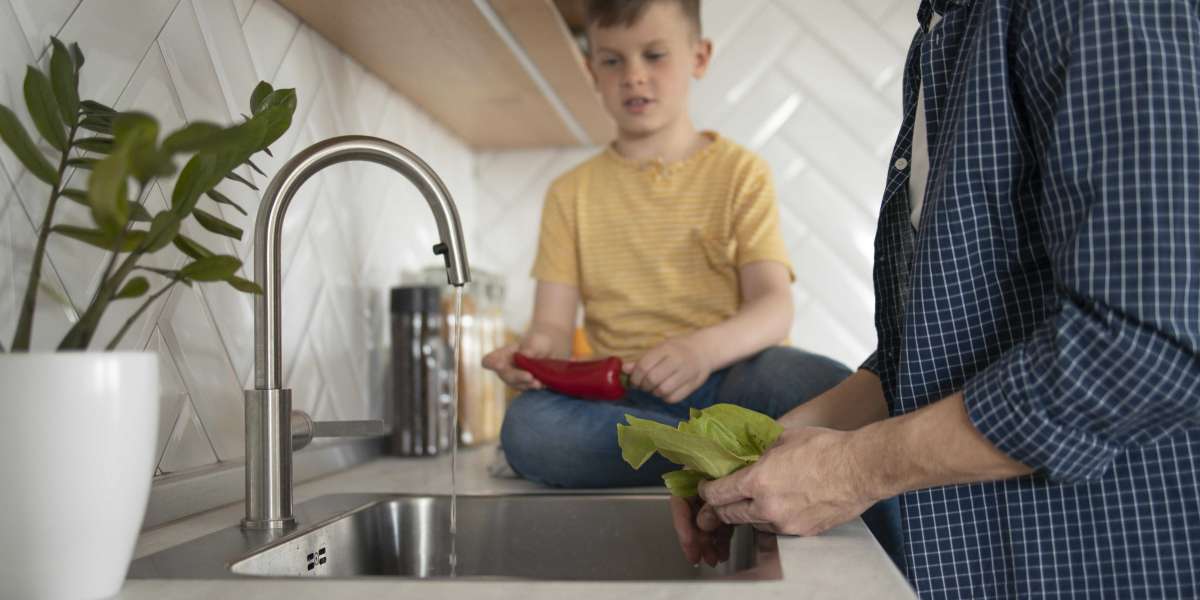Ever had that oh-no moment when your kitchen sink suddenly turns into a mini swimming pool? Yeah, I’ve been there—elbow-deep in murky water, wondering what in the world went wrong. According to a survey by HomeAdvisor, clogged drains are one of the most common household plumbing issues, and over 50% of homeowners face it every year. Crazy, right?
Your kitchen sink plumbing drain works harder than you think. Every splash of water, every bit of grease, and even that tiny grain of rice that slips down the drain—it all adds up. And when something goes wrong? Well, your kitchen can turn from cozy to chaotic real quick.
In this post, I’ll walk you through the top 5 kitchen sink plumbing drain problems I’ve faced (and fixed!)—plus a few simple ways to stop them before they even start. Grab your cup of coffee, and let’s dive in.
The Classic Clogged Drain (And My Messy Mistake)
Ah, the infamous clogged drain. The most common, most annoying, and most avoidable kitchen sink plumbing drain problem out there. I’ll admit it—once, I poured leftover spaghetti sauce (with all that greasy goodness) straight down the drain. Big mistake. By morning, the sink was gurgling like a swamp monster.
Clogs usually happen when food scraps, grease, or soap scum build up inside the pipes. Over time, that gunk narrows the passage until water can’t flow freely. And let me tell you, it doesn’t take much. Even coffee grounds—those tiny devils—can form a sludge that’s tougher than cement once it settles.
What I learned:
- Never, ever pour oil or fat down your drain. Let it cool, then toss it in the trash.
- Use a simple mesh strainer. It costs a few bucks but saves hundreds in plumbing bills.
- Once a month, pour hot (not boiling) water with baking soda and vinegar to clear buildup.
Since I started doing that, I haven’t needed to call a plumber for a clog again. (Knock on wood!)
Slow-Draining Sink – The Silent Annoyance
You know when your sink takes forever to drain, and you’re just standing there tapping your foot? That’s the slow-draining nightmare. It doesn’t seem like a big deal at first, but it’s your sink’s way of saying, “Hey buddy, there’s trouble brewing down here.”
I once ignored it for weeks, thinking it would fix itself (spoiler alert: it didn’t). Eventually, water started pooling, and that funky smell kicked in. Turns out, grease buildup and food particles had partially blocked the P-trap.
How to Fix It (and Prevent It):
- Clean your P-trap every few months. It’s not as gross as it sounds—okay, maybe a little—but it’s totally doable.
- Run hot water for 20–30 seconds after washing dishes. This helps flush away any soft debris before it hardens.
- Avoid chemical drain cleaners. They’re like short-term heroes but can corrode your pipes in the long run.
Trust me, the slow drain is a sneaky one. It creeps up on you, and by the time you notice, you’ve got a full-blown blockage on your hands.
Foul Odors – When the Kitchen Sink Starts Talking Back
Ever walked into your kitchen and thought, “Did something die in here?” Yep, that’s your kitchen sink plumbing drain sending a not-so-subtle message. Odors are a common issue, especially if your pipes trap grease or food bits.
One summer, my sink smelled like rotten eggs for days. I scrubbed, bleached, and even blamed the trash can—until I realized the stink was coming from the drain itself. Turns out, bacteria had a party down there.
Quick Fixes That Actually Work:
- Mix equal parts baking soda and lemon juice, pour it down, and rinse with hot water. Works like magic (and smells amazing).
- Keep your garbage disposal clean by grinding ice cubes and citrus peels once a week.
- If the smell lingers, check the P-trap—it might be dry or clogged.
Nothing ruins the mood like a stinky sink. A little regular cleaning keeps both your kitchen (and your nose) happy.
Leaky Pipes – The Sneaky Water Thief
Leaky pipes are like those silent money stealers. You don’t see them until there’s a puddle under your cabinet or that weird musty smell won’t go away. Once, I noticed a slow drip that turned into a mini flood overnight. The culprit? A loose connection under the sink.
Leaks often come from worn-out seals, cracked pipes, or loose fittings. Even small leaks can waste gallons of water and damage your cabinets or flooring.
Here’s what I do now:
- Check under the sink once a month for dampness or signs of mold.
- Tighten connections gently—don’t overdo it, or you’ll strip the threads.
- Replace rubber washers or seals if they look cracked or dry.
It’s one of those simple habits that saves a ton of trouble (and money). Don’t wait until you’re mopping up water at midnight like I did.
Garbage Disposal Malfunctions – When It Eats Itself
Ah, the garbage disposal. The hero of modern kitchens… until it decides to quit. I remember shoving potato peels down mine one Thanksgiving (bad idea), and suddenly the thing made a horrible grinding sound. It jammed, overheated, and stopped. Lesson learned the hard way.
Garbage disposals get overworked easily. Fibrous foods like celery, corn husks, and even eggshells can jam the blades or dull them fast.
Pro Tips from Experience:
- Always run cold water when using the disposal—it keeps grease solid so it can be chopped and flushed properly.
- Cut large scraps into smaller bits. Think of it like feeding your disposal a small snack, not a full meal.
- Reset the disposal using the red button underneath before calling a plumber. (It works more often than you’d think!)
Taking care of your disposal means taking care of your whole kitchen sink plumbing drain system. Treat it well, and it’ll serve you for years.
FAQs About Kitchen Sink Plumbing Drains
- How often should I clean my kitchen sink drain?
Once a month is ideal. It keeps buildup at bay and prevents nasty smells. A mix of baking soda, vinegar, and hot water works wonders. - Why does my drain keep clogging even after cleaning?
You might be dealing with deeper buildup in the pipes or a faulty P-trap. If it’s a recurring issue, get a professional inspection. - Can I use bleach to clean my drain?
Bleach can disinfect but doesn’t remove buildup. Use it sparingly—too much can damage pipes over time. - What’s the best way to prevent odors?
Flush your drain weekly with lemon juice and baking soda. And always keep the disposal clean. - Should I fix plumbing issues myself or call a pro?
Small clogs? Sure, DIY away. But for leaks, constant backups, or odors you can’t trace, call a licensed plumber. It’ll save you headaches (and money) long-term.
Conclusion
At the end of the day, a little attention goes a long way with your kitchen sink plumbing drain. Clogs, leaks, odors—they’re all preventable if you stay on top of simple maintenance. Trust me, learning the hard way isn’t fun (especially when your kitchen smells like a swamp).
If you’re in Grande Prairie, Alberta, and want professionals who treat your home like their own, reach out to Gray Electric Plumbing Services. We’re proud to be a trusted name for electrical and plumbing solutions, handling everything from sewer cleaning and gas fitting to design-build and solar projects.
Don’t wait until your next kitchen disaster—call Gray Electric Plumbing today for safe, efficient, and reliable service. Your sink (and sanity) will thank you!







